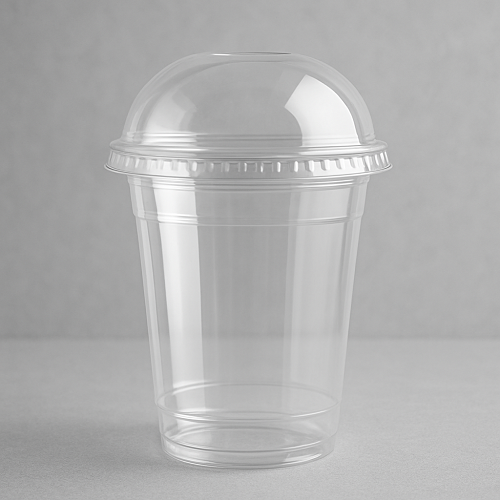Plastic beverage containers are indispensable in today’s fast-paced lifestyle, especially in the food and beverage industry. Among the various options available, PET cold cups have gained prominence for their durability, clarity, and versatility. Widely used in coffee shops, fast-food chains, juice bars, and convenience stores, PET cold cups serve not only as functional drinkware but also as a critical part of branding and consumer experience.
1. What is PET?
Polyethylene Terephthalate (PET) is a thermoplastic polymer belonging to the polyester family. It is derived primarily from ethylene glycol and terephthalic acid.
Key properties of PET relevant to cold cups include:
- High Clarity and Transparency: PET has excellent optical properties, making it ideal for showcasing beverages such as iced coffee, smoothies, sodas, or fruit juices.
- High Strength-to-Weight Ratio: Despite being lightweight, PET cups are rigid, crack-resistant, and capable of withstanding handling and stacking without deformation.
- Good Barrier Properties: PET offers resistance to gas and moisture transmission, helping maintain beverage freshness.
- Temperature Resistance: PET is suitable for cold beverages (typically ranging from -20°C to 60°C). It is unsuitable for hot-fill applications due to deformation at higher temperatures.
2. Manufacturing Process of PET Cold Cups
The production of PET cold cups involves several precision-engineered steps:
2.1 Resin Preparation
- PET resin pellets are dried to remove moisture (below 50 ppm). Moisture negatively affects molecular weight and mechanical properties during processing.
2.2 Injection Molding of Preforms
- A preform (test-tube–shaped PET piece) is manufactured using injection molding. This process ensures controlled wall thickness and uniform molecular orientation.
2.3 Stretch Blow Molding
- Preforms are reheated and expanded inside a mold using compressed air in a stretch blow molding machine. This biaxial stretching aligns polymer chains, enhancing strength, transparency, and barrier properties.
2.4 Cup Trimming and Finishing
- The blown cups are trimmed, cooled, and subjected to quality checks for wall thickness, weight consistency, impact resistance, and dimensional tolerances.
3. Technical Design Considerations
3.1 Cup Geometry
- Rim Diameter & Lip Rolling: The rim must be precisely designed for lid compatibility and consumer comfort. A rolled rim provides rigidity and prevents cracking.
- Taper Angle: A slight taper allows for cup stacking and easy separation.
- Wall Thickness: Typically ranges from 0.3–0.6 mm, balancing clarity, strength, and material efficiency.
3.2 Lid Compatibility
- PET cold cups are usually paired with flat lids (with or without straw holes) or dome lids for whipped cream or toppings. Tolerances in rim dimensions are critical for preventing leakage.
3.3 Printing and Branding
- Surface treatments such as UV flexographic printing or shrink-sleeve labeling allow custom branding. PET’s transparency enhances visual appeal and marketing impact.
4. Performance Characteristics
PET cold cups are tested for:
- Drop Impact Resistance: Cups should resist cracking from drops up to 1 meter.
- Stress Cracking Resistance: Prevents failures when cups are exposed to carbonation or acidic beverages.
- Haze and Gloss: Clarity is measured using ASTM D1003 standards.
- Tensile and Flexural Strength: Ensures rigidity during handling.
5. Market Applications
- Foodservice Industry: Iced coffee, smoothies, milkshakes, carbonated drinks, and cocktails.
- Retail Packaging: Pre-packaged salads, fruit portions, and desserts.
- Event and Catering Services: Single-use cold beverage solutions.
PET cold cups are a cornerstone of the modern beverage industry, combining clarity, strength, and consumer convenience. Their manufacturing relies on advanced polymer science and precise molding technologies, while their success depends on compliance with strict food safety standards. As sustainability becomes a top priority, the future of PET cold cups will be shaped by recycled content integration, bio-based innovations, and improved recycling systems.

